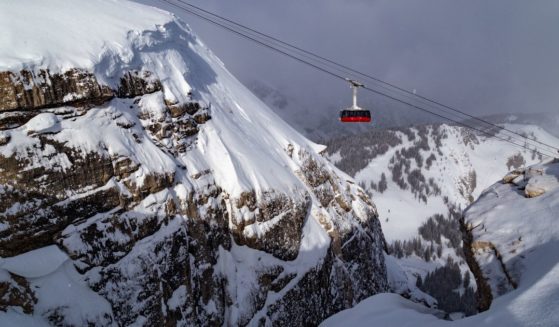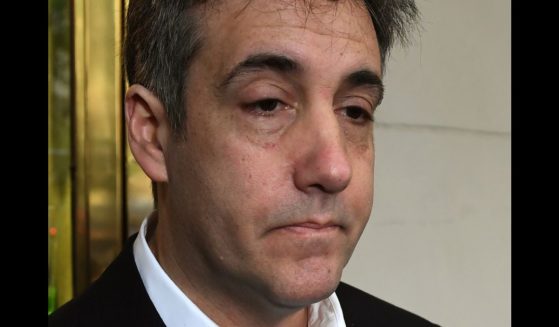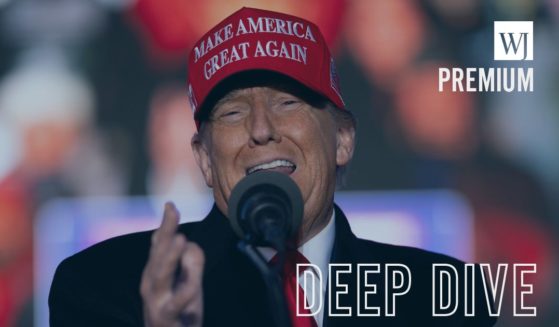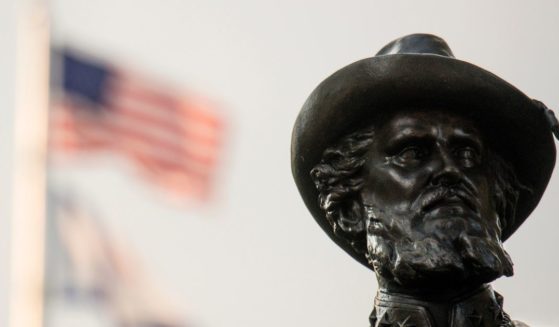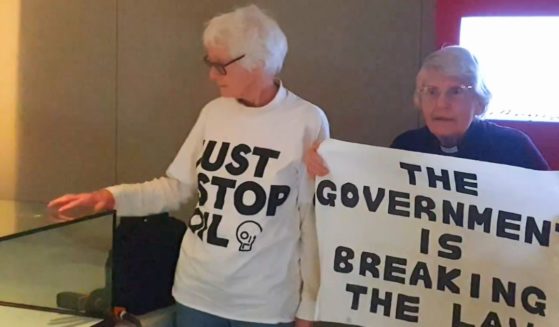SCOTUS Hands Down Big Freedom of Speech Ruling, Clothing Restrictions at Polling Places Gone
On Thursday, the Supreme Court struck down Minnesota’s broad restrictions on voters wearing “political” hats, T-shirts and pins to the polls, but said states can place limits on such apparel.
Minnesota contended the restrictions were reasonable, kept order at polling places and prevented voter intimidation. But the justices, in a 7-2 ruling, said the state’s limits on political clothing violate the free speech clause of the First Amendment.
Chief Justice John Roberts wrote that “if a State wishes to set its polling places apart as areas free of partisan discord, it must employ a more discernible approach than the one Minnesota has offered here.”
At another point he wrote: “Casting a vote is a weighty civic act, akin to a jury’s return of a verdict or a representative’s vote on a piece of legislation. It is a time for choosing, not campaigning. The State may reasonably decide that the interior of the polling place should reflect that distinction.”
Most states restrict what people can wear when they vote, but Minnesota’s restraints were some of the broadest. State law bars voters from casting a ballot while wearing clothing related to a campaign, such as a T-shirt with the name of a candidate. It also said voters couldn’t wear a “political badge, political button, or other political insignia” to vote. That was the part of state law that was challenged and invalidated by the court.
Roberts said the problem came down to the word “political,” which state law didn’t define. He said the state’s interpretation of what counted as political was unreasonable, covering any item that made reference to a group with recognizable political views or referring to any subject on which a political candidate or party has taken a stance.
“Would a ‘Support Our Troops’ shirt be banned, if one of the candidates or parties had expressed a view on military funding or aid for veterans? What about a ‘#MeToo’ shirt, referencing the movement to increase awareness of sexual harassment and assault?” Roberts wrote.
Justices Sonia Sotomayor and Stephen Breyer would have sent the case to the Minnesota Supreme Court for clarification of the law’s boundaries.
It is unclear exactly how many states the ruling could affect. Both Minnesota and the group challenging the state’s law had said there are about 10 states with laws similar to Minnesota’s, though they disagreed significantly on which ones.
Roberts said other states have laws that describe restrictions “in more lucid terms” than Minnesota’s, referencing laws in California and Texas. California bars voters from wearing anything with a “candidate’s name, likeness or logo” or a “ballot measure’s number, title, subject or logo,” Roberts said, and Texas prohibits wearing anything connected to a political party appearing on the ballot.
Daniel Rogan, who defended Minnesota’s law before the justices, said that while he was disappointed by the justices’ conclusion, there was a lot in the opinion “we’re very pleased about.” Secretary of State Steve Simon, a Democrat, said he would work with the Legislature, which returns in January, to pass new voter apparel legislation. And Rogan said other provisions in state law will still bar voters from wearing apparel that promotes a candidate or party or might be considered misleading to voters.
The case before the Supreme Court dates back to 2010 and involves a dispute that began over Tea Party T-shirts and buttons with the words “Please I.D. Me,” a reference to legislation then under discussion in Minnesota that would have required residents to show photo identification to vote. The legislation didn’t become law.
Pointing to the state’s statute, Minnesota officials said before the election that neither the Tea Party T-shirts nor those buttons would be permitted at the polls. In response, a group of voters and organizations sued.
J. David Breemer, a lawyer with the Pacific Legal Foundation, the group behind the challenge, said the court “put all government entities on notice — they cannot dictate the terms of personal expression, nor can they designate the arbiters of free speech at their whim.”
The Supreme Court has previously backed some restrictions on voters’ free speech rights at the polls. In 1992, the court upheld a Tennessee statute prohibiting the display or distribution of campaign materials within 100 feet of a polling place.
The case is 16-1435 Minnesota Voters Alliance v. Mansky.
The Western Journal has not reviewed this Associated Press story prior to publication. Therefore, it may contain editorial bias or may in some other way not meet our normal editorial standards. It is provided to our readers as a service from The Western Journal.
Truth and Accuracy
We are committed to truth and accuracy in all of our journalism. Read our editorial standards.



